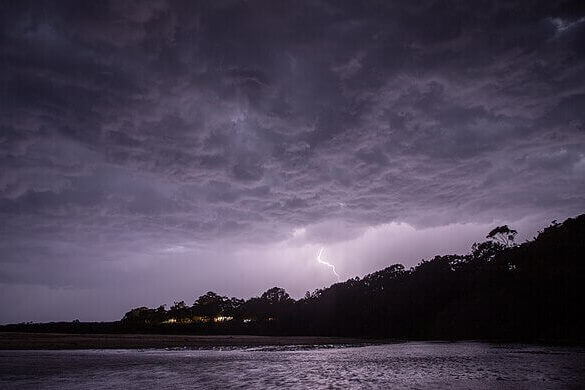
The climate crisis is expected to continue driving a rise in lightning-induced wildfires for decades to come, with potentially cascading effects on public safety and health, according to experts and new research.
Fires sparked by lightning often ignite in remote areas and typically grow larger than those caused by human activity. As a result, the increase in lightning-driven fires is likely contributing to more destructive wildfire seasons, worsening air quality across vast regions – especially over the past several years.
Over the past 40 years, thunderstorms and weather conditions conducive to lightning have been happening more often across large parts of the western United States, including western Washington, western Oregon, California’s Central Valley, and higher elevations of the Rocky Mountains.
This pattern is not confined to the US. Spain has faced some of its most devastating wildfires in history this year, many sparked by lightning, while Canada has already seen fires burn more than twice the average annual forest area – the majority also lightning-caused.
Although the worsening wildfire trend is well documented, most climate models have so far lacked the precision to show how lightning and wildfires will interact in a warming climate. A new study , published last month, is the first to apply machine learning to this challenge. It assessed both projected changes in lightning frequency and related factors such as temperature, humidity, wind, and soil moisture that influence fire spread.
“The overall signal is that we will have more risk of lightning-caused fires,” said Dmitri Kalashnikov, a climate scientist at the Sierra Nevada Research Institute at University of California-Merced and the study’s lead author.
The findings come as the US enters an intense wildfire season, with conditions unfolding much as the researchers anticipate for the future. A series of dry thunderstorms in California last month triggered thousands of lightning strikes, sparking at least 20 new fires that have consumed tens of thousands of acres. One blaze destroyed several buildings in the historic Gold Rush settlement of Chinese Camp, east of Modesto.
The study’s lead author, Kalashnikov, found marked regional variations. In the inland Pacific Northwest, more lightning is likely but will not necessarily result in a significant rise in fire risk due to a wetter environment. By contrast, the desert Southwest is expected to face higher wildfire risks even without a rise in lightning frequency, owing to worsening drought.
Despite these differences, the conclusion was stark: wildfire risk is set to grow across nearly all of the western United States. The study projected increases in lightning-caused wildfires across 98% of the region, driven by either more lightning, more fire-conducive weather, or both.
With firefighting resources already under strain, the implications are troubling. Between 2000 and 2015, wildfire smoke is estimated to have caused around 1,000 deaths per year in the US. If lightning-driven fires surge as predicted, smoke-related deaths could exceed 20,000 people a year by mid-century.
The increase in thunderstorms and lightning also brings secondary risks, including flash floods and landslides in recently burned areas. Smoke particles from wildfires may further accelerate glacial melt in Canada, Greenland and Europe by darkening ice surfaces.
Because lightning-driven fires are often located in remote terrain, they also draw heavily on firefighting resources, leaving urban areas less protected. A sudden lightning storm during peak fire season can stretch crews “really, really thin” for weeks, noted Max Moritz, a wildfire specialist at the University of California, Santa Barbara.
“Maybe a week or two later you may have a big Santa Ana wind event,” said Moritz, “then you have a real recipe for catastrophe.”
Combined with the trend of urban expansion into fire-prone landscapes, this pressure could have profound consequences for the insurance sector, which is already facing billions of dollars in claims from wildfires in Los Angeles alone this year.
The challenge is exacerbated by reductions in federal resources under the Trump administration, including cuts to the National Oceanic and Atmospheric Administration, the National Park Service, and other agencies. By late July, more than a quarter of firefighting positions at the US Forest Service remained vacant, while an immigration raid on a firefighting crew in Oregon reportedly damaged morale.
Moritz sees part of the solution in rethinking how communities are built in high-risk areas. He advocates for stricter fire-safe building codes and the creation of agricultural buffer zones around towns and cities, which could help shield people and homes from advancing wildfires.
“There’s a growing awareness now that live fuel moisture, the amount of water in green living twigs and leaves, is also a really strong control on fire dynamics,” said Moritz. “That’s what we have here in Santa Barbara. We’ve got an existing old agricultural belt that’s relatively thin. In the places where it still exists, wildfires cannot sweep out of the national forest and into neighborhoods.”
——————————————————————————
At Natural World Fund, we are passionate about restoring habitats in the UK to halt the decline in our wildlife.

